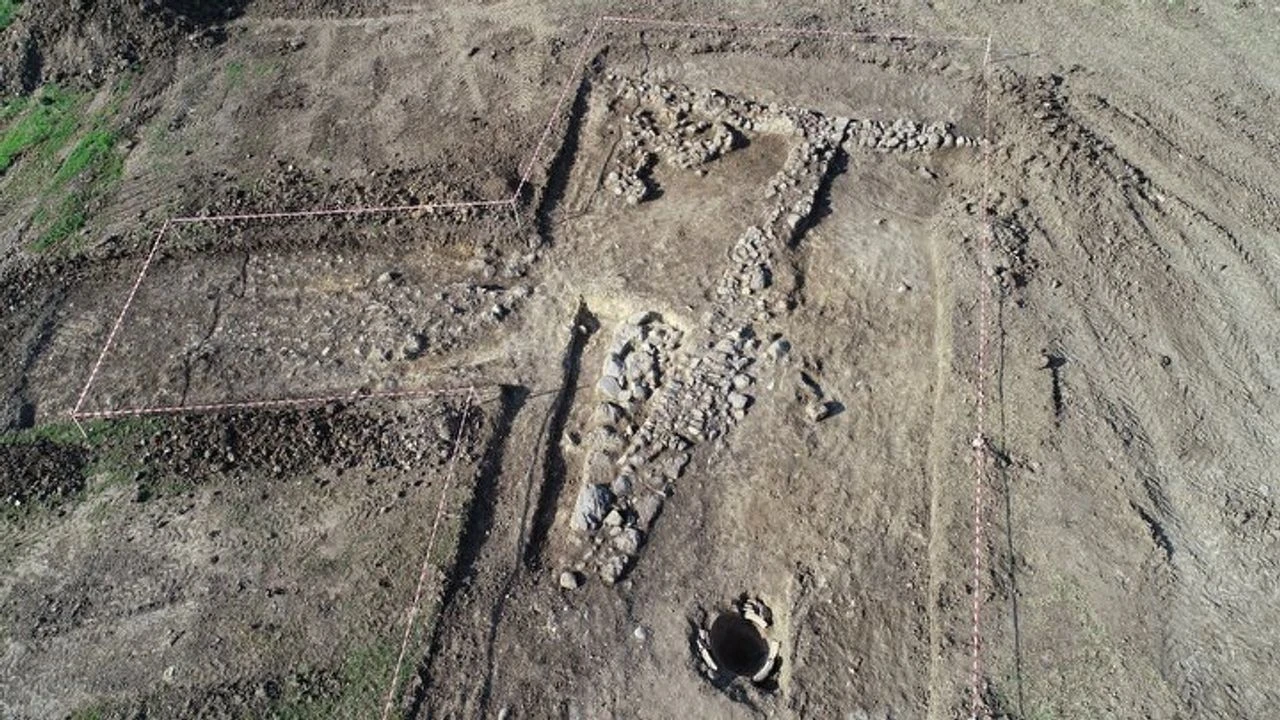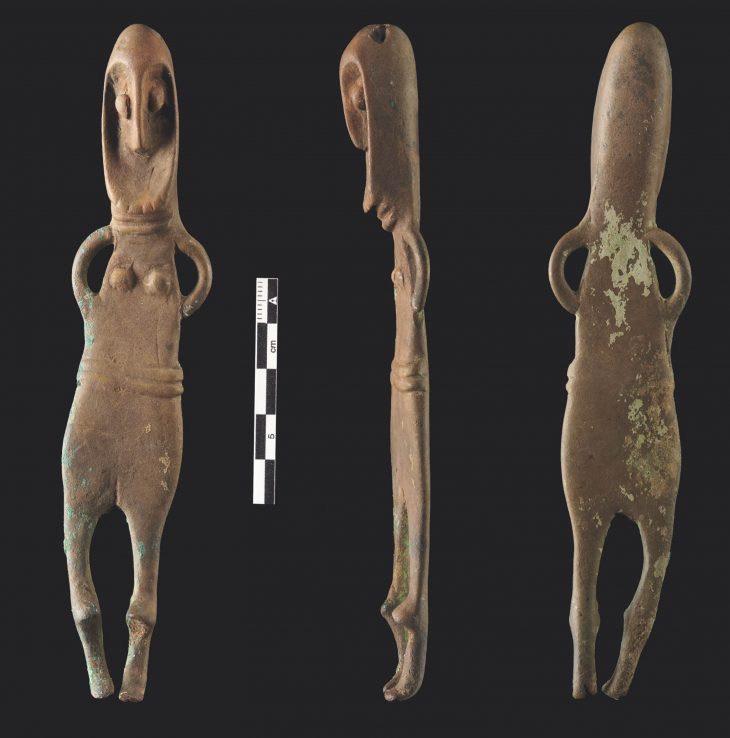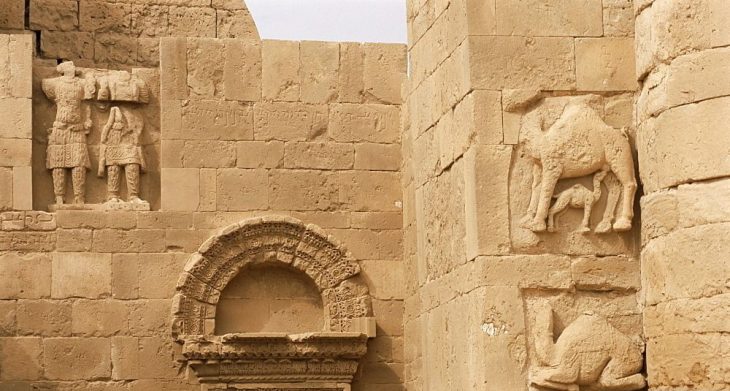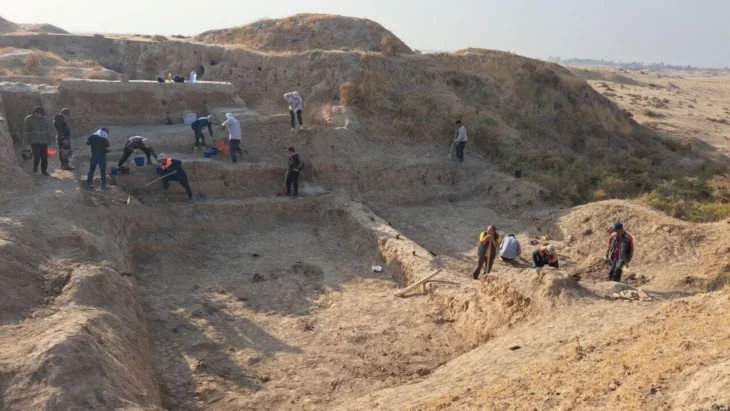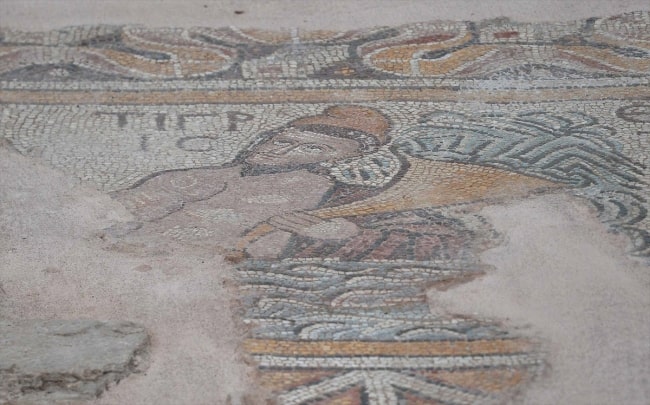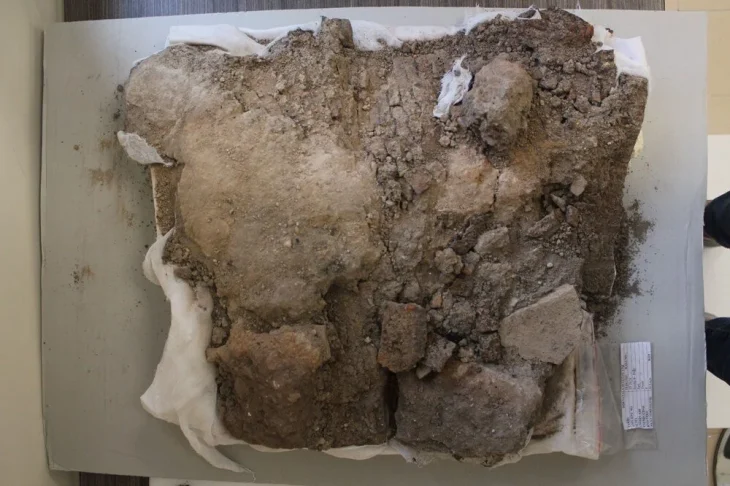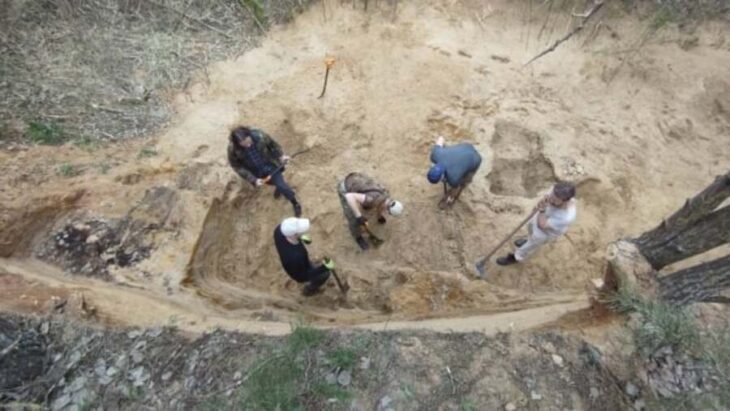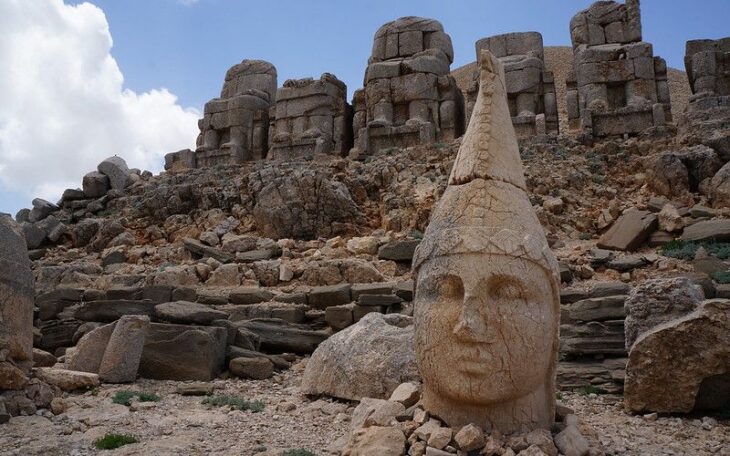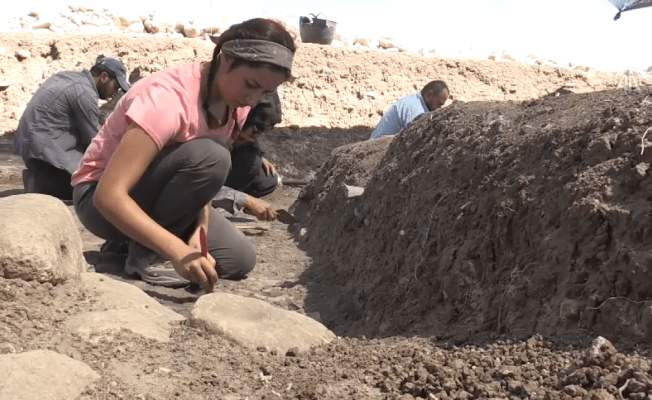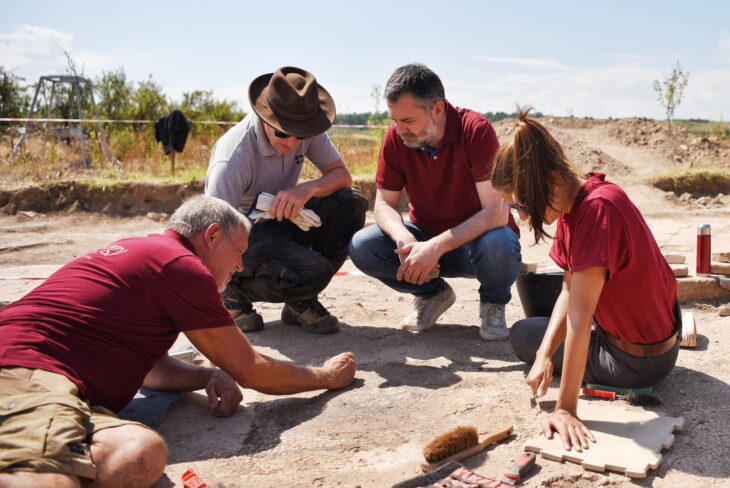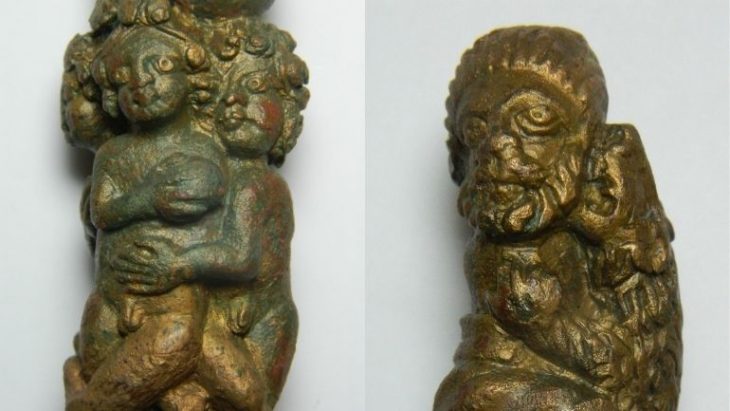Archaeologists working at the prehistoric site of Ikiztepe Mound in northern Türkiye have uncovered two extraordinary burials — one belonging to a hunter and the other to a child — each interred with personal items. The discovery sheds new light on Bronze Age beliefs, burial customs, and social organization in one of Anatolia’s most enduring settlements.
New Discoveries from the Southern Sector
This year’s excavations, directed by Assoc. Prof. Aslıhan Beyazıt of Istanbul University, mark the first systematic exploration of Ikiztepe’s southern area. The work revealed three graves lying just beneath the surface — two of them so-called “gifted graves,” where the dead were buried with items reflecting their identity and role in the community.
One grave belonged to an adult male thought to be a hunter, laid to rest with bronze harpoon points, while the other contained the remains of a six-year-old child wearing bracelets. These findings not only mirror burial traditions seen in the site’s northern necropolis but also suggest subtle chronological and cultural variations between the two areas.
“The appearance of Early Bronze Age graves so close to the surface indicates a different stratigraphic sequence in the south,” Beyazıt explained. “That difference may point to shifts in settlement organization or even changing rituals over time.”
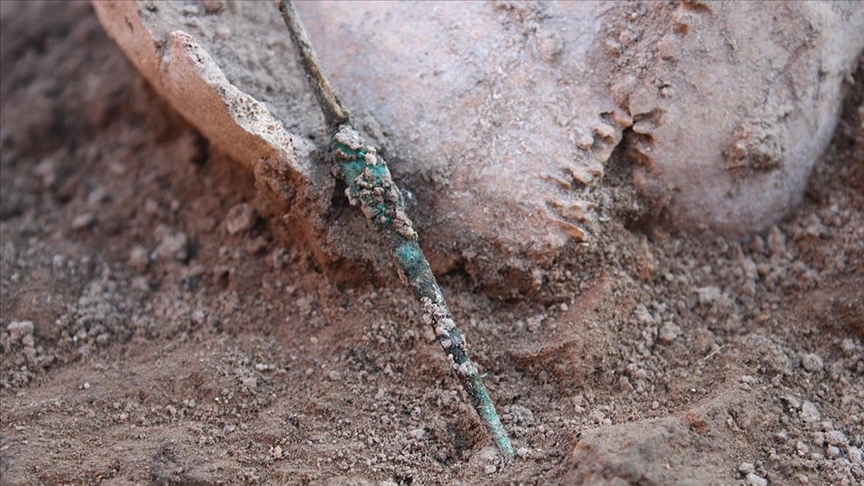
Half a Century of Excavations
Located in Bafra, in the province of Samsun, the Ikiztepe Mound has been under excavation for over 51 years and remains one of the longest-running archaeological projects in the Black Sea region. The site was continuously inhabited from 4500 to 2000 B.C., spanning the Chalcolithic and Early Bronze Ages. More than 15,000 artifacts have been unearthed — from pottery and bone tools to early examples of medical instruments and textile equipment — providing a detailed picture of prehistoric Anatolian life.
📣 Our WhatsApp channel is now LIVE! Stay up-to-date with the latest news and updates, just click here to follow us on WhatsApp and never miss a thing!!
The mound’s four main hills (Tepe I–IV) form a complex archaeological landscape where settlement, production, and burial areas intermingled. Ikiztepe’s strategic location near the Kızılırmak River delta made it a hub of trade and cultural exchange linking the Anatolian interior with the Black Sea coast.
Daily Life and Ancient Industry
Beyond its funerary finds, Ikiztepe offers rare insight into prehistoric industry and social structure. Numerous spindle whorls, loom weights, and bone awls indicate the presence of organized textile production, likely involving women and children as active contributors. Archaeobotanical and zooarchaeological analyses are underway to reconstruct dietary patterns — from domesticated grains to wild plants and animal protein sources — offering a glimpse into Bronze Age subsistence strategies.
These material traces show that the people of Ikiztepe were not isolated villagers but participants in regional exchange networks. Copper and tin artifacts, as well as imported pottery, reveal long-distance connections that may have extended as far as the Caucasus and Central Anatolia.
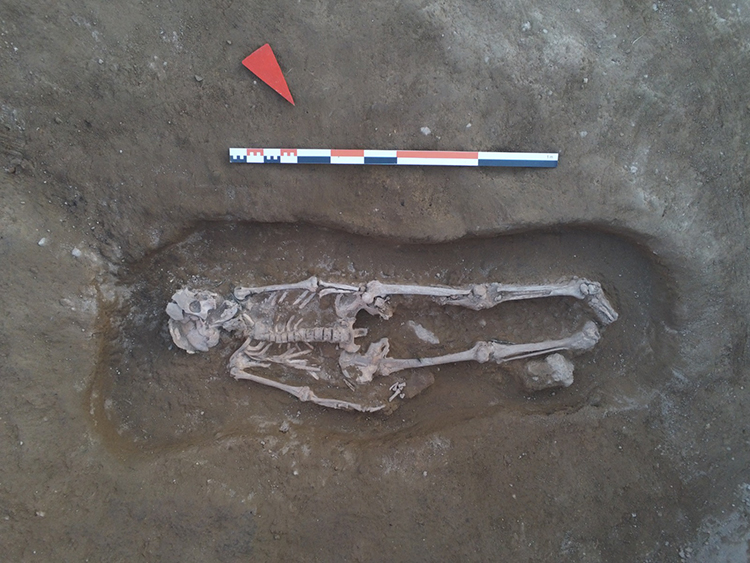
A Window into Anatolia’s Prehistoric Heritage
Ikiztepe continues to stand as a cornerstone of Anatolian archaeology, illuminating the evolution of early communities in northern Türkiye. The new “gifted graves” expand our understanding of how ancient societies expressed identity, status, and spirituality through burial practices.
As Beyazıt’s team continues its work under the “Legacy for the Future” project of the Ministry of Culture and Tourism, future excavations are expected to uncover further evidence of how this coastal settlement adapted to environmental change, shifting economies, and evolving social norms.
“Each layer of soil at Ikiztepe tells us not only how people lived,” Beyazıt says, “but also how they remembered their dead — and, in doing so, how they defined themselves.”
Cover Image Credit: AA

